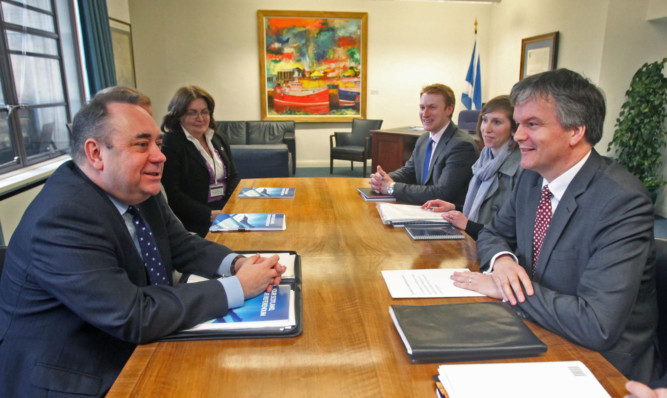
By Michael Moore, former Scottish Secretary.
This weekend, Scotland is a new country.
As we built up to Thursday’s historic vote on independence, it was impossible to find anyone sitting out of the great debate about Scotland’s future.
It was noisy, messy and energising. The turnout was dizzying.
Old and new-style politics combined to make this the defining political moment of our generation.
But, at times in the build-up to the vote, the pro-UK parties appeared tone deaf to the demands of people across the country we need to change and fast.
We should have made greater powers for the Scottish Parliament a clearer part of our argument for a No vote in the referendum. And we should have shown how the three parties would deliver them.
If we had done this, then the rollercoaster opinion poll ride of the last fortnight would have been less dramatic.
There was time to do it. Back in the summer of 2011, Scottish Liberal Democrat leader Willie Rennie and I discussed the need to update our party’s proposals for Home Rule, which was duly done by Menzies Campbell.
The other parties caught up, but no serious effort was made to make the ideas gel together and so we lost the chance to formulate a compelling, unified proposal.
Joint statements of intent by the Scottish leaders, reinforced by the UK leaders in the dying moments of the campaign, did not cut through, other than to suggest a degree of panic.
The person who held it all together was former PM Gordon Brown, with strong arguments and barnstorming speeches. We should have engaged him earlier.
A lot of change is afoot but there is one final area where I actually hope we will not see change and that is in terms of respecting the result and respecting one another.
This is a country which has been divided about its future. We need to respect our differences of opinion, but not dwell on them. We need leadership at every level to allow the wounds to heal and the sensitivities to fade.
Having unleashed our energy in the referendum, it’s time now to channel it into creating a different and better Scotland.

Enjoy the convenience of having The Sunday Post delivered as a digital ePaper straight to your smartphone, tablet or computer.
Subscribe for only £5.49 a month and enjoy all the benefits of the printed paper as a digital replica.
Subscribe